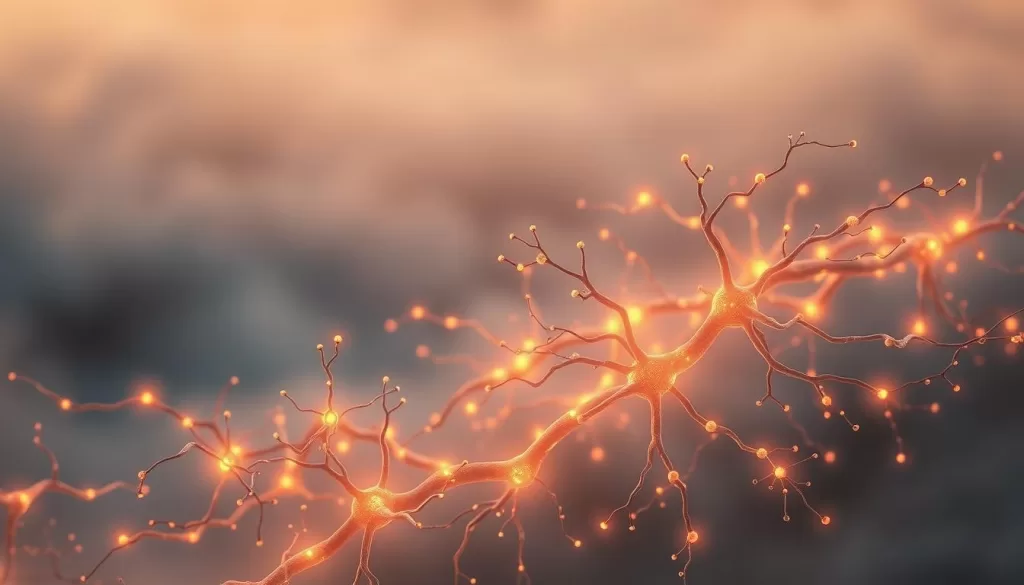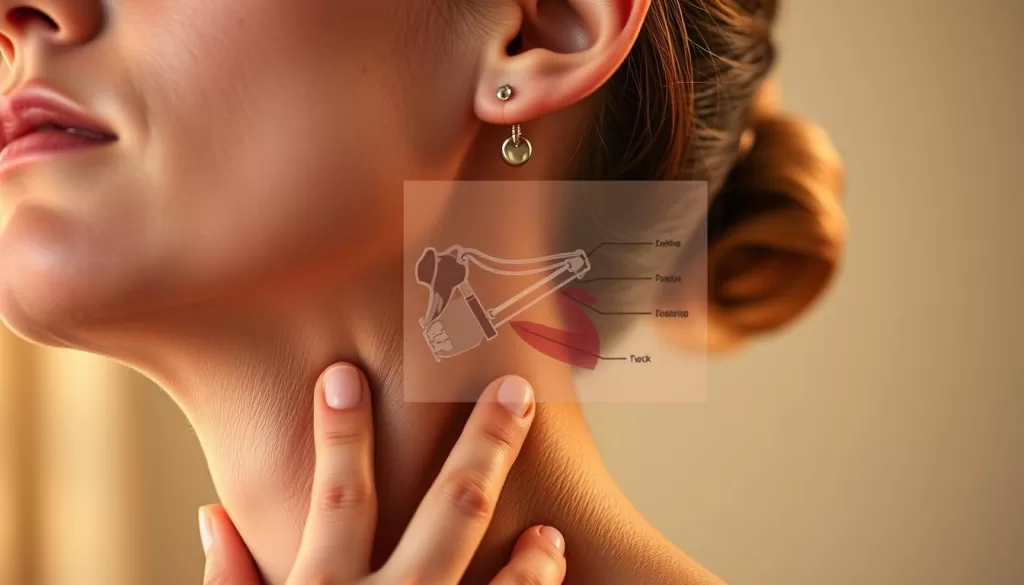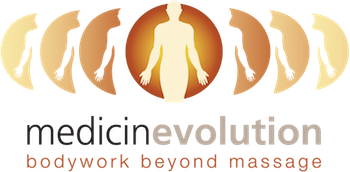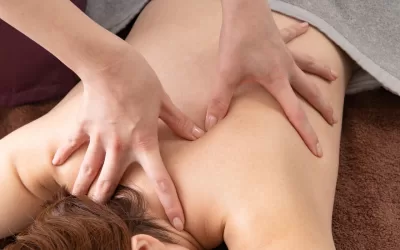Are you tired of dealing with jaw discomfort and looking for a non-medication solution? You’re not alone. Millions face temporomandibular joint disorders, leading to chronic pain and limited jaw movement.
Natural methods are a promising alternative for those wanting relief without medication side effects. By focusing on fascia, neural retraining, and neck mechanics, people can find lasting solutions.
Key Takeaways
- Understanding the role of fascia in jaw tension
- Exploring neural retraining techniques for pain management
- The importance of neck mechanics in overall jaw health
- Holistic approaches to achieving long-term relief
- Non-pharmacological methods for managing TMJ disorders
Understanding TMJ Disorders and Jaw Pain
It’s important to understand TMJ disorders to find relief from jaw pain. TMJ dysfunction affects about 34% of people worldwide. It’s often linked to problems in the cervical spine.
What Causes TMJ Disorders?
TMJ disorders can be caused by many things. This includes cervical posture deformities, teeth grinding, and stress. When the cervical spine is misaligned, it can strain the TMJ. This leads to pain and discomfort.
Choosing the right practitioner for TMJ disorder relief is key to better treatment.
Common Symptoms and Warning Signs
Common symptoms of TMJ disorders include jaw pain, jaw clicking or locking, and trouble chewing. If not treated, TMJ disorders can cause chronic pain and limited jaw movement. Spotting these signs early is vital for effective jaw pain treatment.
Knowing the causes and symptoms of TMJ disorders is the first step to relief. It helps improve your quality of life.
The Limitations of Conventional Treatment Approaches
Traditional ways to manage TMJ pain might not fix the real problem. These methods usually just treat the symptoms, not the cause.
Doctors often give medication for TMJ pain. But, it mainly hides the symptoms without fixing the pain’s source.
Why Medication Only Masks Symptoms
Medication can give quick relief, but it doesn’t solve the TMJ problem. Using it for a long time can cause side effects and make you dependent.
The Drawbacks of Splints and Guards
Oral splints and guards are another common treatment. They can ease jaw pain by changing the bite. Yet, they don’t fix the connection between the neck and TMJ.
| Treatment Method | Temporary Relief | Addresses Root Cause |
|---|---|---|
| Medication | Yes | No |
| Splints/Guards | Yes | Partially |
It’s key to know the limits of these treatments for TMJ pain. We need to look into other ways that really solve TMJ problems.
The Fascial Connection to TMJ Dysfunction
Fascia, a web of connective tissue, plays a key role in TMJ disorders. It affects jaw alignment and muscle tension. Fascia surrounds every muscle, bone, and organ, providing support and structure. In TMJ dysfunction, fascial tension can cause pain and limit jaw movement.
What Is Fascia and How Does It Affect Your Jaw?
Fascia is a complex network of connective tissue that supports muscles, bones, and organs. When fascia becomes restricted or inflamed, it can cause TMJ disorders. Research shows that myofascial trigger points in the upper trapezius can affect jaw muscles, leading to TMJ dysfunction.
Myofascial Release Techniques for TMJ Relief
Myofascial release is a manual therapy that aims to relieve fascial tension. It is beneficial for TMJ relief.
Self-Massage Techniques
Self-massage can effectively release fascial tension. Use your fingers to massage the jaw, temples, and neck. Regular self-massage can help reduce TMJ pain and improve jaw mobility.
Professional Fascial Treatment Options
For severe cases, professional treatment is needed. Techniques like Rolfing can release deep fascial tension. Other options include physical therapy and myofascial release therapy by a licensed therapist.
| Treatment Option | Description | Benefits |
|---|---|---|
| Self-Massage | Massaging the jaw, temples, and neck to release tension | Relieves TMJ pain, improves jaw mobility |
| Rolfing | A form of bodywork that releases deep fascial tension | Significant relief from TMJ pain, improved posture |
| Physical Therapy | Targeted exercises and manual therapy to improve jaw function | Improved jaw mobility, reduced pain |
Understanding the fascial connection to TMJ dysfunction is key. Using myofascial release techniques can find effective tmj relief options. Whether through self-massage or professional treatments like jaw alignment therapy, addressing fascial tension is essential. It helps alleviate TMJ pain and improves jaw function.
Neural Retraining: Reprogramming Pain Signals
The brain can change how it responds to pain, helping TMJ sufferers. This method changes how the brain handles pain signals, not just treating symptoms.
How Your Brain Processes Jaw Pain
Jaw pain is more than just physical; it’s also about how the brain sees pain. Studies show neural retraining can manage chronic pain by changing these signals. The brain’s pathways can keep pain going, but retraining can stop this.
Understanding Pain Processing: Pain is processed through complex brain networks. TMJ pain can make these networks too active, leading to more pain. Neural retraining tries to calm these networks down.
Effective Neural Retraining Exercises
There are many ways to do neural retraining, like mindfulness and neuroplasticity exercises. These methods help change how the brain responds to pain.
Mindfulness-Based Pain Reduction
Mindfulness can lower pain by making the brain more tolerant of it. Meditation and deep breathing are very helpful.
“Mindfulness is not just a practice, it’s a way of being. It allows us to observe our pain without becoming overwhelmed by it.”
Neuroplasticity Techniques for TMJ
Neuroplasticity exercises teach the brain to handle pain differently. This includes visualization, gentle jaw exercises, and activities that help the brain adapt.
- Gentle Jaw Stretches
- Visualization Exercises
- Mindfulness Meditation
Adding these techniques to your daily life can help reduce TMJ pain over time.
| Technique | Description | Benefit |
|---|---|---|
| Mindfulness Meditation | Practice being present in the moment | Reduces stress and pain perception |
| Gentle Jaw Exercises | Stretch and relax jaw muscles | Relieves tension and pain |
| Visualization | Imagine a pain-free state | Rewires brain’s pain response |

Neck Mechanics and Their Impact on Jaw Function
It’s key to understand how the neck and TMJ are connected for jaw pain treatment. The way our neck moves affects our jaw, which is important for TMJ health.
The Cervical Spine-TMJ Relationship
Studies show that the neck and TMJ work together. A study on the National Center for Biotechnology Information website explains how this connection helps us understand TMJ problems.
How our neck is aligned and moves can impact our TMJ. For example, leaning forward can put more strain on the TMJ, making pain worse.
Correcting Posture to Alleviate Jaw Pain
Fixing forward head posture is key to easing jaw pain from TMJ disorders. This involves being mindful of posture, doing exercises, and sometimes seeing a physical therapist.
Forward Head Posture Correction
To fix forward head posture, try these simple exercises:
- Chin tucks: Stand or sit up straight and tuck your chin in towards your neck.
- Neck stretches: Gently tilt your head to the side, bringing your ear towards your shoulder.
Neck Strengthening Exercises
Strengthening neck muscles can also help with TMJ pain. Try these exercises:
- Neck bridges: Lie on your back with your knees bent and feet flat on the floor, then lift your head and neck.
- Isometric neck exercises: Place your hand on your forehead and resist as you try to push your head forward.
| Exercise | Description | Benefit |
|---|---|---|
| Chin Tucks | Stand or sit with good posture and tuck your chin in. | Improves posture, reduces TMJ strain |
| Neck Stretches | Gently tilt your head to the side, bringing your ear towards your shoulder. | Relaxes neck muscles, improves flexibility |
| Neck Bridges | Lie on your back with knees bent and feet flat, then lift your head and neck. | Strengthens neck muscles, supports TMJ |
By working on neck mechanics and posture, we can get TMJ disorder relief. Adding these exercises and posture corrections to our daily life can improve jaw function and reduce pain.
Effective TMJ & Jaw Pain Relief Strategies
Managing TMJ pain requires a holistic approach. This includes gentle jaw stretches, breathing practices, and relaxation techniques. These methods help address the complex nature of TMJ disorders, leading to relief and better quality of life.
Gentle Jaw Exercises and Stretches
Gentle jaw exercises can ease TMJ pain by improving jaw mobility and reducing tension. Simple stretches, like slowly opening and closing the mouth, can be done several times a day. Research shows that exercises targeting the cervicoscapular complex can also help manage TMJ dysfunction (PMC5859913).

Stress Management Techniques
Stress plays a big role in TMJ pain, making stress management key for relief. Techniques like deep breathing, progressive muscle relaxation, and mindfulness meditation can lower stress levels.
Breathing Practices
Deep breathing exercises calm the nervous system, reducing jaw tension. Focus on slow, deliberate breaths, feeling the breath move in and out of your body.
Progressive Relaxation for Jaw Muscles
Progressive muscle relaxation involves tensing and relaxing different muscle groups, including the jaw. This technique helps release tension and promotes relaxation.
By adding these strategies to your daily routine, you can manage TMJ pain effectively. Regular practice of these techniques can lead to long-term relief and a better quality of life.
Dietary and Lifestyle Modifications for TMJ Support
Making certain diet and lifestyle changes can greatly help TMJ health. It’s important to treat the whole person, not just the symptoms. This approach helps manage TMJ disorders better.
Anti-Inflammatory Foods and Supplements
Eating foods that fight inflammation can help TMJ. Omega-3 rich foods like salmon and walnuts are good. Turmeric and ginger supplements also help with TMJ relief.
A healthcare expert says, “Eating anti-inflammatory foods can lessen TMJ symptoms a lot.”
“A diet rich in anti-inflammatory foods can significantly reduce the severity of TMJ symptoms.”
Sleep Positioning and Habits
Proper sleep is key for TMJ health. Sleeping on your back with a good pillow keeps your neck and jaw right. Don’t sleep on your stomach, as it twists your neck.
Stress Reduction in Daily Life
Stress makes TMJ tension worse. Activities like meditation, yoga, or deep breathing help. Regular exercise and a balanced work-life are also key for stress control.
By making these diet and lifestyle changes, people can manage TMJ better. This improves their overall life quality.
Conclusion: Creating Your Holistic TMJ Relief Plan
Understanding TMJ disorders and jaw pain is the first step to a pain-free life. The tmj relief options like fascia and neural retraining, neck mechanics, and lifestyle changes offer a full solution. They help manage TMJ pain effectively.
Jaw alignment therapy goes beyond just treating symptoms. It tackles the root causes. Gentle jaw exercises, stress management, and dietary changes can help. This way, you can create a plan that suits you.
Being patient and persistent is key when trying tmj relief options. By mixing these methods and making smart lifestyle choices, you can reduce TMJ pain. This improves your overall health and well-being.
FAQ
What are the common symptoms of TMJ disorders?
TMJ disorders often cause jaw pain and clicking sounds when you open or close your mouth. You might also have trouble chewing or find your jaw locked. Some people get earaches, headaches, or facial pain too.
How does fascia affect TMJ dysfunction?
Fascia is a network of connective tissue around muscles and bones. When it gets restricted or inflamed, it can limit jaw movement and cause pain. This is how fascia affects TMJ dysfunction.
What is neural retraining, and how can it help with TMJ pain?
Neural retraining changes how your brain handles pain signals. Mindfulness and neuroplasticity exercises can reduce your brain’s sensitivity to pain. This helps ease TMJ pain.
How does neck posture affect TMJ function?
Bad neck posture, like forward head posture, strains the jaw joint and muscles. Exercises and stretches can correct this posture. This helps reduce jaw pain.
What are some effective stress management techniques for TMJ relief?
Stress management techniques like deep breathing and meditation can help. Gentle jaw exercises and stretches also relax the jaw muscles. These methods reduce TMJ pain.
Are there any dietary changes that can help support TMJ health?
Yes, eating anti-inflammatory foods and supplements can help. Avoid hard or chewy foods and stay hydrated. These changes support TMJ health.
How can I manage TMJ pain through lifestyle modifications?
Managing stress, exercising regularly, and getting good sleep helps. Avoid clenching or grinding your teeth. These habits reduce TMJ pain.
Can TMJ disorders be treated without medication or surgery?
Yes, many non-pharmacological and non-surgical treatments exist. Myofascial release, neural retraining, and correcting neck posture are effective. A holistic approach manages TMJ pain well.





